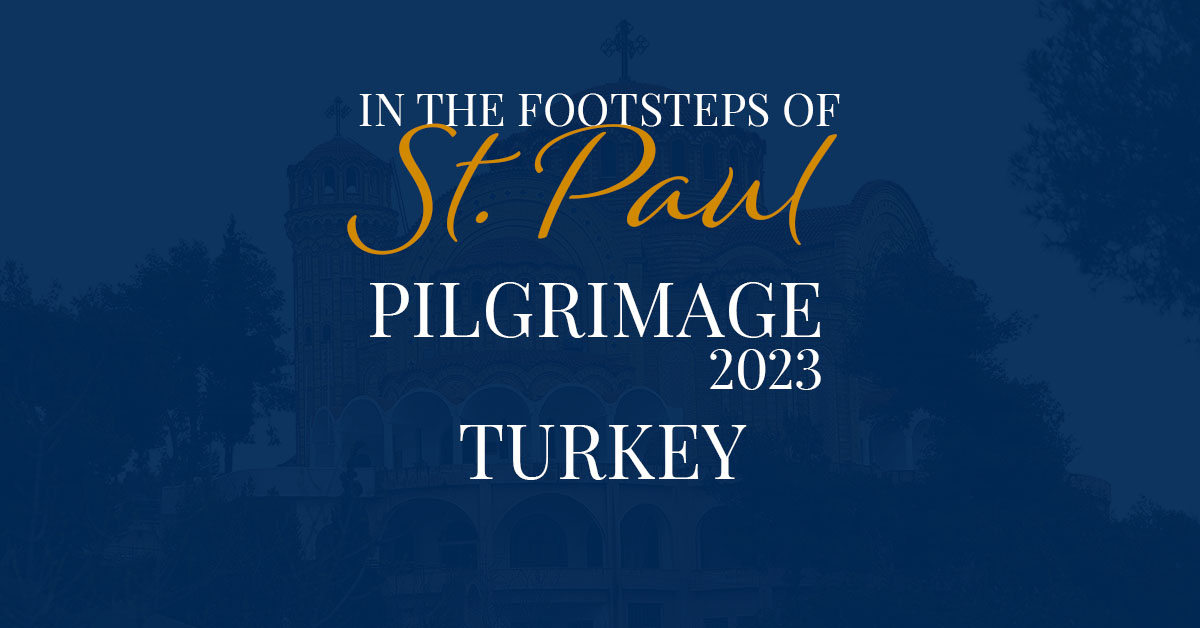Hagia Sophia
After our ~16 hours of airports and flying, we made it to Istanbul, our first stop on our 2023 Mundelein pilgrimage in the footsteps of St. Paul. Seeing as Istanbul is over 90% Muslim, like the rest of Turkey, and St. Paul never explicitly mentions stopping in the city, it might seem like a strange first place for us to visit.
Nevertheless, I had a lot of expectations for this place. Among many other reasons, Istanbul (previously Constantinople) is of particular interest for Christians because it is home to Hagia Sophia (Greek for “Holy Wisdom”), one of the most ancient, magnificent, and tumultuous Christian cathedrals ever built. I remember learning about this legendary place of prayer in my church history classes, and I’ve often imagined it as an expression of Christianity’s triumph and grandeur in the ancient world. It was the largest Christian church in the world until the construction of St. Peter’s Basilica in Rome, and scientists believe Hagia Sophia’s nearly 15-centuries-old structure is sturdy enough to survive an 8.0-magnitude earthquake.
Originally built by Emperor Constantine I in 325, the first Hagia Sophia was destroyed by a riot in the city. Emperor Theodosius II rebuilt it in 415, only for the church to be destroyed again by a fire in 532. In 537, Emperor Justinian built the third edition, which had to be partially reconstructed after the initial dome collapsed in 558. This time it would serve as the cathedral of Constantinople, being a pre-eminent place for celebrating the divine liturgy (Mass) for almost another 900 years . . . until being converted to a mosque by the Ottoman Empire in 1453. Five centuries later, the Turkish president turned Hagia Sophia into a museum for people of all faiths to visit, and recently in 2020 the current Turkish president turned it back into a mosque. Suffice it to say that the history of Hagia Sophia is a little complicated and controversial. Still, this did not curtail any of our excitement about visiting such a renowned place of prayer.
When we entered Hagia Sophia (removing our shoes, as is custom when entering mosques), we saw that a green carpet was covering over a marble floor on which ancient emperors, bishops, and faithful Christians had walked and prayed for a millennium. Nonetheless, faint outlines of crosses and parts of icons in side-apses could be seen despite being masked over with typical Islamic floral symbols or curtains. Our tour guide explained that much of this had to do with traditional Muslim practices, such as not using human imagery during prayer and worship as they view such a practice as idolatry.
A little disappointed that the icons didn’t gleam as brilliantly and the artwork didn’t proclaim the glory of Christ as triumphantly as I had fantasized leading up to this moment, I sat down on the green carpet, leaning against a stone support as I gazed up at the ceiling. I began to wonder what all the Christians of the past had experienced when they worshipped the Lord in this place, and what they had expected for its future. At Hagia Sophia’s glorious and pompous beginnings, could anybody have imagined all the political and religious tension it would later experience? How many times it would be destroyed, rebuilt, converted to a different religion, secularized, and re-converted again?
And as I gazed up at the ceiling, which was now the ceiling of a mosque and not the ceiling of one of the most famous churches in ancient history, I noticed for the first time the sheer amount of space that existed between the floor and the dome of the cathedral. It was huge. It was quiet and still, despite all the visitors talking and taking pictures below. For the first time since entering Hagia Sophia, I stopped focusing on how it wasn’t meeting my expectations, and I was instead drawn into the mysterious fact that this humongous space capable of making one feel small and humble before the Lord remained constant despite all the changes and controversies enveloping the structure for over a thousand years. And over this vast, God-revealing space, one could see the face of Mary peeking out from behind one of the curtains set up during times of Muslim prayers as she held the Christ Child. Her presence had remained there, looking over that space and hearing the prayers of both Christians and Muslims for almost 1,500 years.
So if God taught me anything at Hagia Sophia today, it was that instead of filling my pilgrimage with expectations and being disappointed when they aren’t met, perhaps I should instead seek to provide Him the space to accomplish His will as Mary did. When Christ entered this world, how many failed to rejoice with the angels because they did not have enough space for him (cf. Luke 2:7)? Maybe by giving Him more space, it’ll turn out that He actually fills me with morejoy than if I had simply requested a few narrow expectations to be met.
-Grant Huslig


